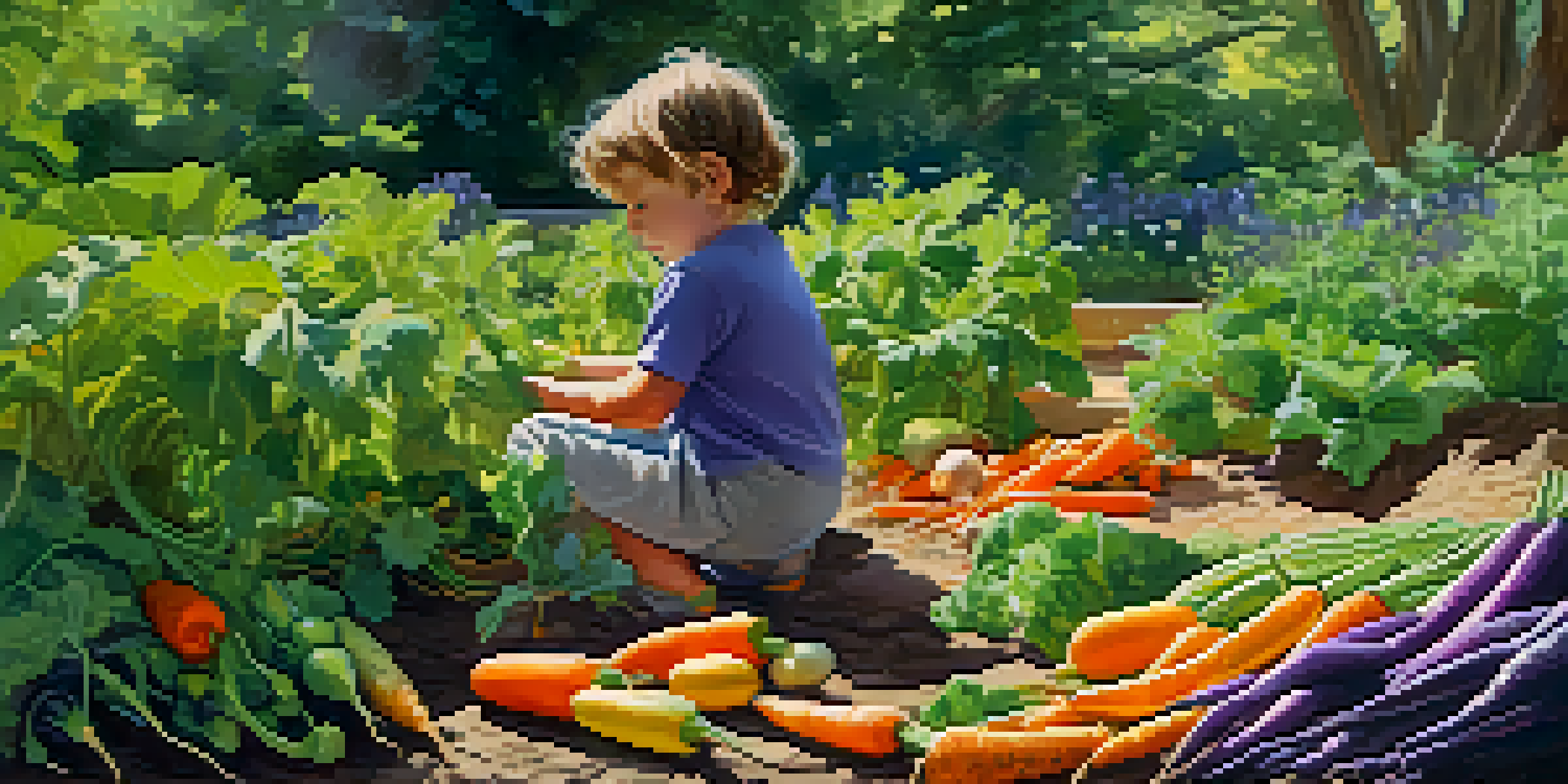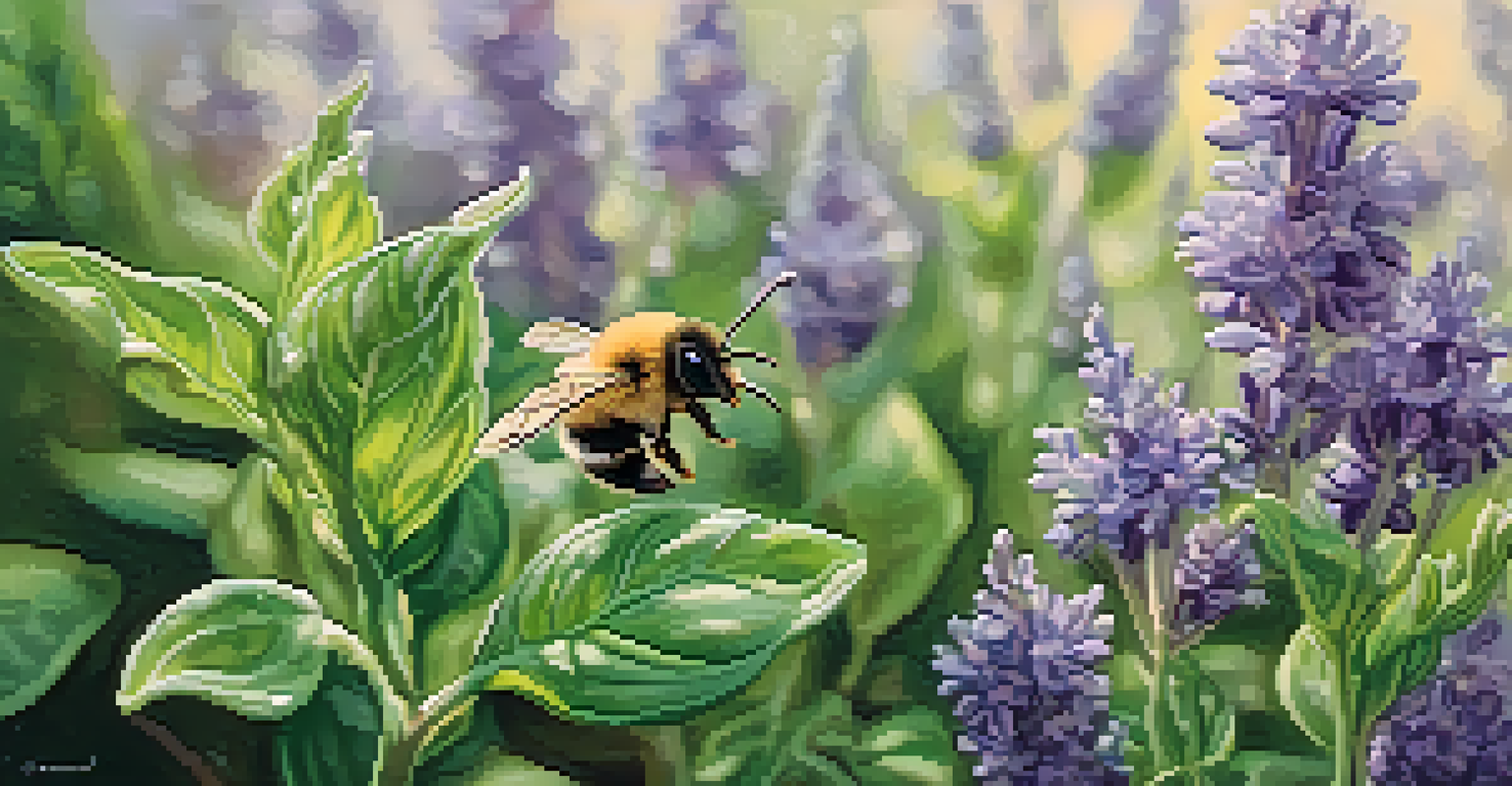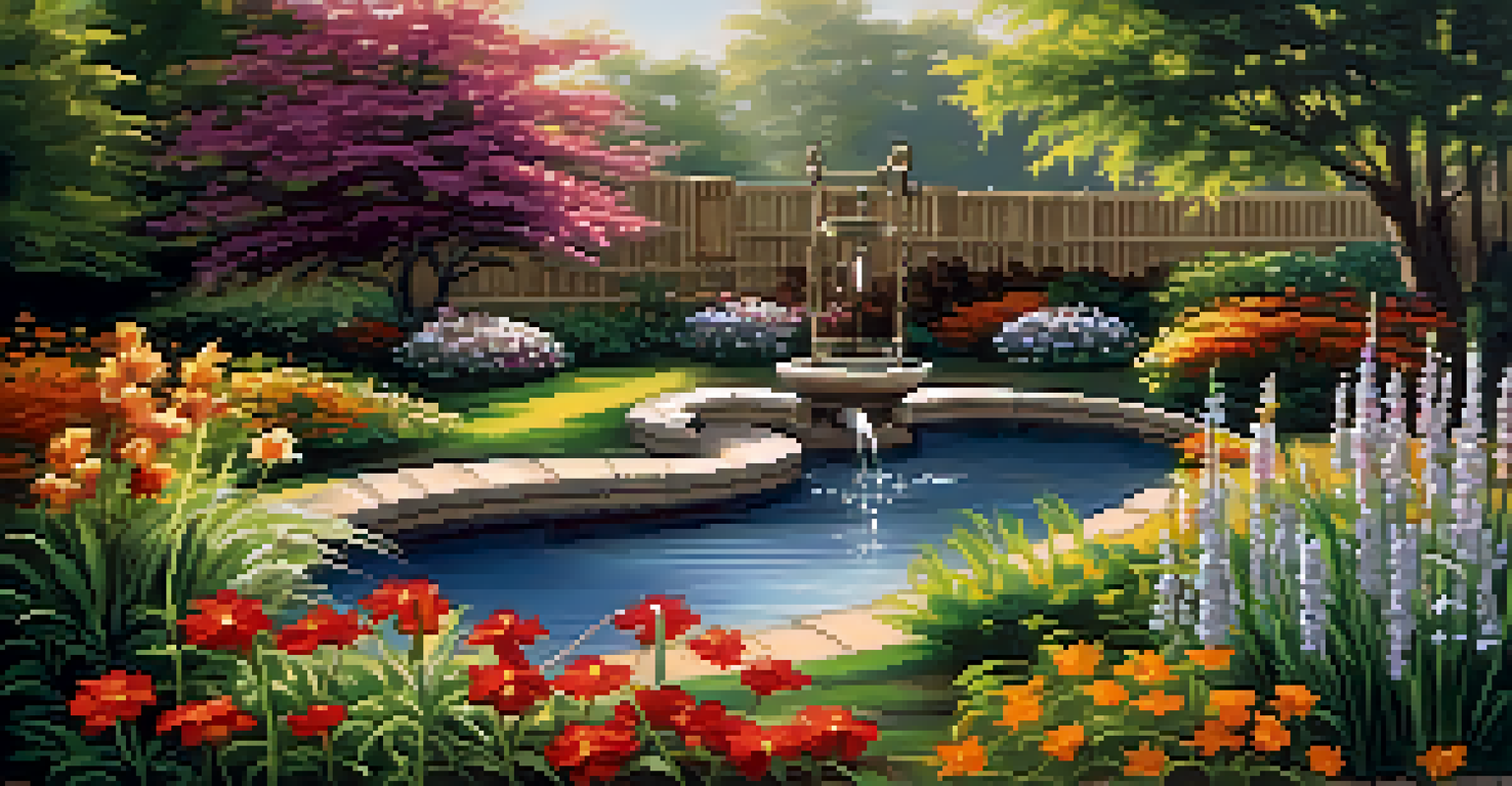Creating a Sensory Garden: Edible Plants for All the Senses

Understanding Sensory Gardens and Their Benefits
A sensory garden is designed to stimulate all five senses: sight, sound, touch, taste, and smell. These gardens invite us to engage with nature in a more profound way, offering both enjoyment and tranquility. Imagine walking through a fragrant herb patch or listening to the gentle rustle of leaves; it’s an experience that can rejuvenate the mind and body.
Gardening adds years to your life and life to your years.
Creating a sensory garden can also provide educational opportunities, especially for children. It encourages exploration and curiosity, making it a fantastic way to teach about plants, nutrition, and the environment. By incorporating edible plants, you add another layer of excitement as young gardeners can taste the fruits of their labor.
Moreover, sensory gardens can be therapeutic. Many people find that gardening reduces stress and promotes mindfulness. When you immerse yourself in the colors, textures, and smells of a garden filled with edible plants, it’s easy to forget the hustle and bustle of daily life.
Choosing Edible Plants for Your Sensory Garden
Selecting the right edible plants is crucial for creating a sensory garden. Look for plants that engage multiple senses; for instance, vibrant strawberries not only offer a delightful taste but also a beautiful red hue. Herbs like basil and mint can add aromatic experiences while being used in cooking.

Consider incorporating plants with different textures as well. For example, fuzzy sage leaves contrast nicely with the smoothness of kale or the prickly nature of certain cacti. This variety will not only make your garden visually appealing but also provide tactile experiences that can be fun for all ages.
Sensory Gardens Engage All Senses
These gardens stimulate sight, sound, touch, taste, and smell, offering a holistic experience that promotes enjoyment and tranquility.
Seasonality is another important factor when choosing your plants. Select a mix of annuals and perennials to ensure that your garden remains productive throughout the year. This way, you’ll have fresh herbs in spring and juicy tomatoes in summer, creating a dynamic sensory experience that changes with the seasons.
Incorporating Fragrant Herbs for a Sensory Boost
Herbs are an essential component of any sensory garden, particularly because of their distinct smells. Imagine brushing against a rosemary plant and inhaling its fresh, earthy scent; it’s invigorating and can transport you to a sunny Mediterranean landscape. Herbs like lavender and thyme also offer delightful fragrances that can enhance the overall atmosphere of your garden.
The love of gardening is a seed once sown that never dies.
In addition to their aromas, many herbs have culinary uses that make them doubly beneficial. You can snip fresh basil for a salad or use mint to elevate a refreshing drink. This dual purpose not only engages the senses but also encourages a deeper connection with the food we eat.
Moreover, fragrant herbs can attract beneficial pollinators, like bees and butterflies, adding to the sensory experience. Watching these creatures flutter about adds movement and life, creating a vibrant environment that’s harmonious with nature.
Adding Colorful Vegetables for Visual Appeal
Color is a key element in a sensory garden, and colorful vegetables can truly elevate the visual experience. Think of bright orange carrots, deep purple eggplants, and sunny yellow peppers. These vibrant colors not only catch the eye but also indicate a variety of nutrients that are good for your health.
Planting a rainbow of vegetables can make your garden feel alive and dynamic. You can create patterns or groupings that highlight the colors, making the space even more inviting. This visual stimulation can spark joy and curiosity, particularly in children who are often drawn to bright colors.
Edible Plants Enhance Learning
Incorporating edible plants not only provides delicious rewards but also serves as an educational tool for children to learn about nature and nutrition.
In addition to their beauty, colorful vegetables can serve as great conversation starters. They prompt questions about their growth, taste, and uses in cooking, fostering a connection between gardening and culinary experiences. This blends education with enjoyment, making the garden a perfect place to learn and explore.
Textural Plants to Engage the Sense of Touch
The sense of touch is often overlooked in garden design, but it can be incredibly engaging. Including plants with varied textures, such as the soft leaves of lamb’s ears or the rough bark of a tree, can create a tactile experience that invites interaction. Encourage visitors to reach out and feel these different plants as they wander through.
You can also incorporate climbing plants, like peas or pole beans, that require support structures. The act of reaching up to pick a pod is an exciting, hands-on experience that connects gardeners to the process of growth. This can be particularly thrilling for children, fostering a sense of accomplishment.
Furthermore, consider adding materials like gravel paths or wooden benches, which can enhance the touch experience throughout the garden. Each texture adds a new layer to the sensory journey, making every visit unique and engaging.
Creating Soundscapes in Your Sensory Garden
Sound is often an underappreciated aspect of garden design, but it can significantly enhance the sensory experience. Consider incorporating wind chimes or water features like a small fountain. The gentle tinkling of chimes or the soothing sound of flowing water can create a peaceful ambiance that invites relaxation.
Additionally, plant selections can also contribute to sound. Grasses that sway in the breeze or plants with hollow stems that rustle can add natural soundscapes to the garden. This dynamic quality can make the garden feel alive and ever-changing, engaging visitors even when they are simply listening.
Visual and Textural Variety Matters
A mix of colorful vegetables and varied textures creates an engaging environment that invites interaction and sparks curiosity among visitors.
Encourage visitors to observe and listen attentively as they move through the space. This mindfulness can deepen their connection to nature and enhance their overall experience, reminding us that gardens are more than just visual delights—they’re a symphony of sensations waiting to be discovered.
Incorporating Edible Flowers for Aesthetic and Flavor
Edible flowers are a fantastic addition to any sensory garden, offering both beauty and flavor. Flowers like nasturtiums add a splash of color and a peppery taste that can elevate salads or garnishes. Imagine the delight of picking a bright yellow flower and adding it to your meal—it’s a feast for the eyes and palate alike.
These blossoms can also attract pollinators, enriching your garden ecosystem. As bees and butterflies visit, they help with pollination, ensuring your edible plants thrive. This creates a vibrant environment where beauty and productivity coexist harmoniously.

Moreover, edible flowers can spark curiosity and conversation. When guests see a flower on their plate, they're often intrigued and inspired to learn more about gardening and cooking. It’s a wonderful way to engage others and share the joys of growing food in a sensory-rich environment.